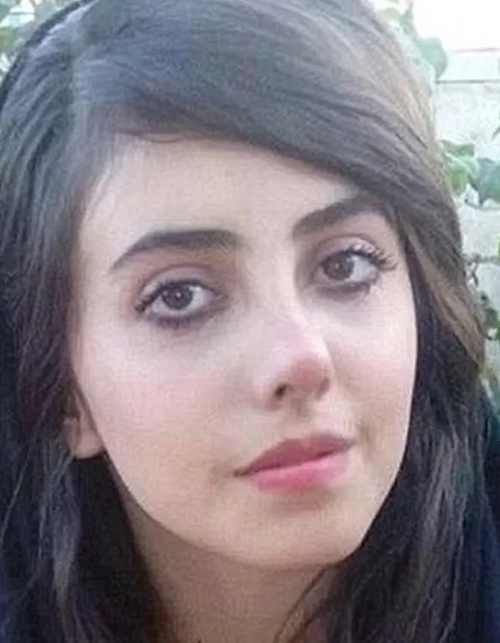When we think about the internet today, it’s almost impossible not to recognize the power it holds over people’s lives. It can turn an ordinary young person into a household name overnight, and it can just as quickly pull them into controversy. Few stories illustrate this more clearly than that of Sahar Tabar, born Fatemeh Khishvand, a young woman from Iran whose online presence captivated millions around the world. Her story is not just about fame; it’s about how social media can reshape identity, stir debate, and leave lasting consequences—both good and bad.

For many people, Sahar first appeared as a shock to the system. Her selfies spread across social media like wildfire, showing her with exaggerated features, hauntingly stylized makeup, and edits that made her look otherworldly. These images fascinated people. Some were horrified, some curious, and others simply intrigued. But no matter the reaction, everyone seemed to have an opinion, and those opinions helped her climb rapidly into viral fame. In truth, behind that persona was a young woman experimenting with art and expression, not someone chasing destruction.
By 2019, her popularity reached such heights that it caught the attention of authorities in her home country. What began as artistic playfulness suddenly became a matter of censorship and legality. Sahar was arrested on charges tied to her online activity, and the world took notice. Early reports suggested she could face severe punishment, and that sparked international concern. People debated fiercely: Was she a criminal, or was she an artist exercising her right to self-expression? The discussion wasn’t limited to Iran—it spread globally, touching on issues of freedom, art, and the impact of digital culture.
In the end, she served about 14 months before being released. For a young woman who had only intended to create striking images, that time behind bars was a reminder of just how far-reaching the consequences of viral fame could be. When she was finally able to speak freely, she shed light on something many had misunderstood. Contrary to widespread rumors, she had not gone under the knife for dozens of surgeries to create her unusual look. Instead, much of her appearance came down to makeup, creative photo editing, and only a few minor cosmetic procedures. What the internet had mistaken for extreme surgical alteration was, in reality, a mix of performance art and clever visual trickery.
For Sahar, her work was never only about shock value. She explained that it was her way of entertaining, provoking thought, and even challenging the rigid standards of beauty that so often weigh heavily on young women. Think about that for a moment. How often do we, as women, feel pressured by images in magazines, television, and now social media? We know what it’s like to be judged by appearance, to be told what is beautiful and what is not. Sahar’s art was, in many ways, her rebellion against those narrow expectations. By presenting herself in a way that was impossible to ignore, she forced people to confront their own perceptions of beauty, perfection, and femininity.
Today, her story still sparks conversation. Some see her as an artist, others as a provocateur, and still others as a young woman who got caught up in extraordinary circumstances. No matter where one stands, her journey offers lessons worth reflecting on—especially for women who have watched how beauty standards have shifted over the decades. We’ve lived through times when natural curves were celebrated, when thinness was demanded, when “anti-aging” became a billion-dollar industry, and when social media filters now blur the line between real and unreal. Sahar’s photos may have been exaggerated, even unsettling, but in their exaggeration, they highlighted the impossible standards many women quietly battle every day.
Her rise and fall serve as a reminder of the double-edged sword of social media. On one hand, it gives people a platform to share creativity, connect with others, and reach audiences far beyond their own neighborhoods. On the other hand, it can distort reality, invite harsh judgment, and sometimes lead to real-world consequences no one could have predicted. For younger generations, Sahar’s story may feel like a warning. For women over fifty, who have witnessed social changes across decades, it can feel like déjà vu—the same pressures, just wrapped in new technology.

What can we take away from Sahar Tabar’s experience? Perhaps it is the need for balance. We can celebrate creativity while also recognizing the risks of chasing viral attention. We can appreciate art while still questioning the standards it challenges. And most importantly, we can remind ourselves—and the younger women in our lives—that no online persona, no edited image, and no viral moment is worth sacrificing peace of mind, freedom, or authenticity.
Sahar Tabar’s journey may have started with stylized selfies, but it became so much more than that. It turned into a global conversation about beauty, censorship, and the heavy weight of online fame. Whether we see her as bold, misguided, or simply misunderstood, her story offers a powerful lesson in the cost of viral attention and the courage it takes to be different in a world that often demands conformity. And that is something every generation of women can reflect on.





